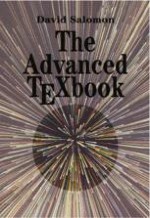"Why is 'lEX so hard to use?" is the most frequent comment/complaint made by (frustrated) 'lEX users. The answer: Because it is programmable (has many features commonly found in programming languages), because it pays attention to detail, and because its creator has developed it for his own use (perhaps also his administrative assistant's) and not for general use. The material presented here is a direct result of this complaint and is an attempt to make it easier for inexperienced users to get the kind of high-quality typesetting that is possible with 'lEX. The material is based on classes taught since 1985, and on the author's personal experience with 'lEX, which includes writing three books and numerous articles, handouts, and letters. Both introductory and advanced material is included here. There are many examples as well as a detailed discussion of topics, such as \ valign and \emergencystretch, that are only briefly touched upon in The TpJXbook. Chapter 20 describes the macros used to typeset this book; it also lists the METAFONT programs for the special characters used.
